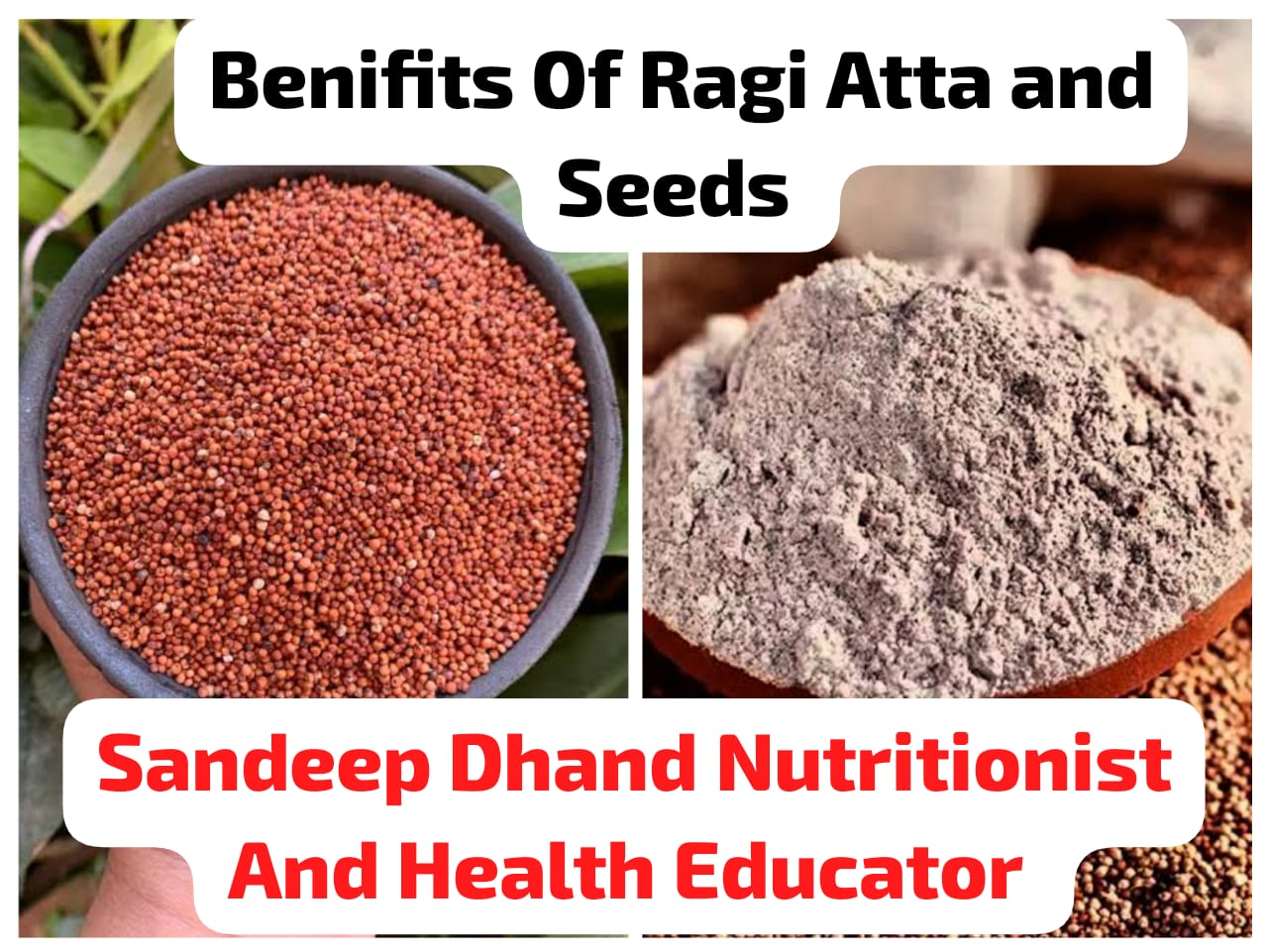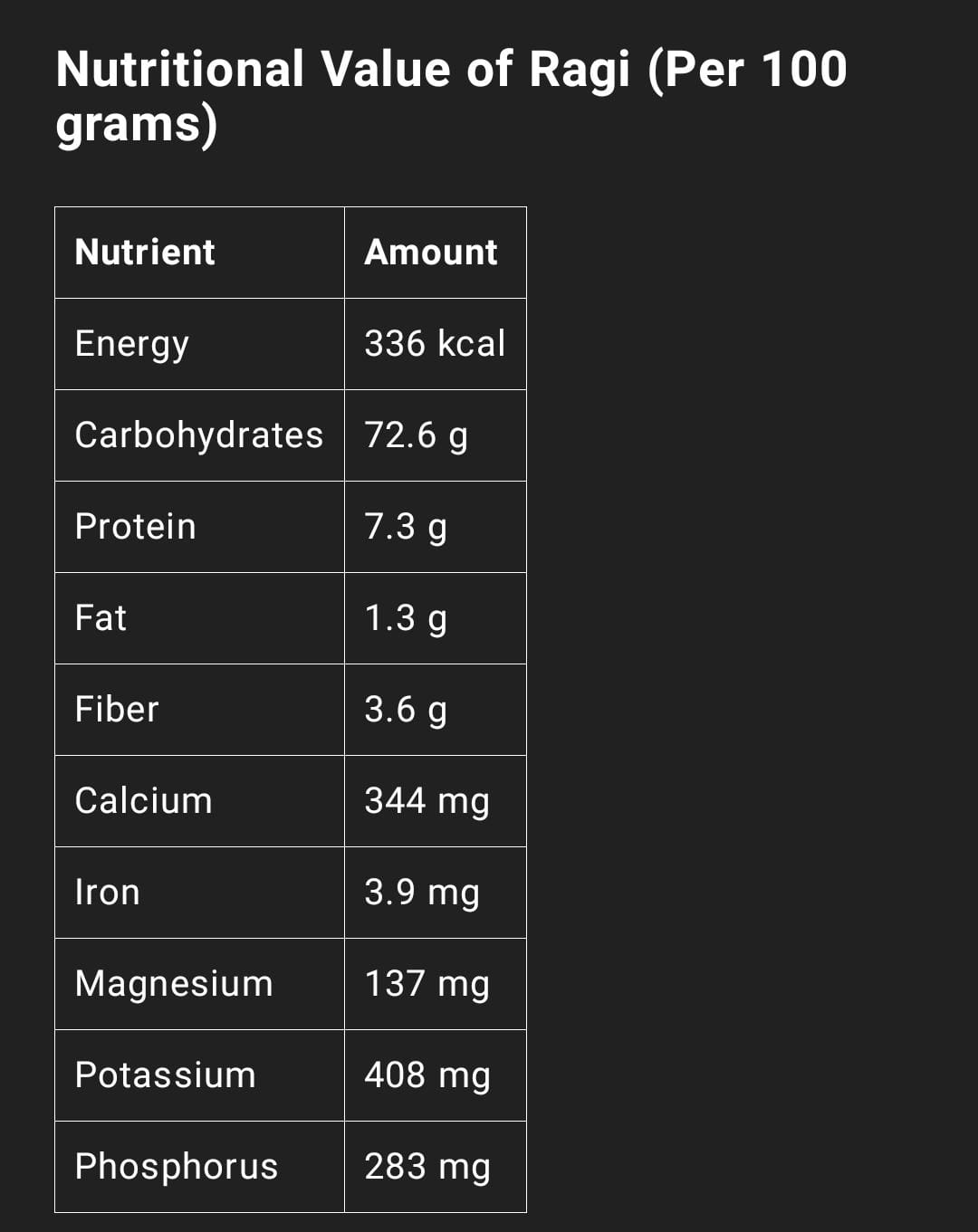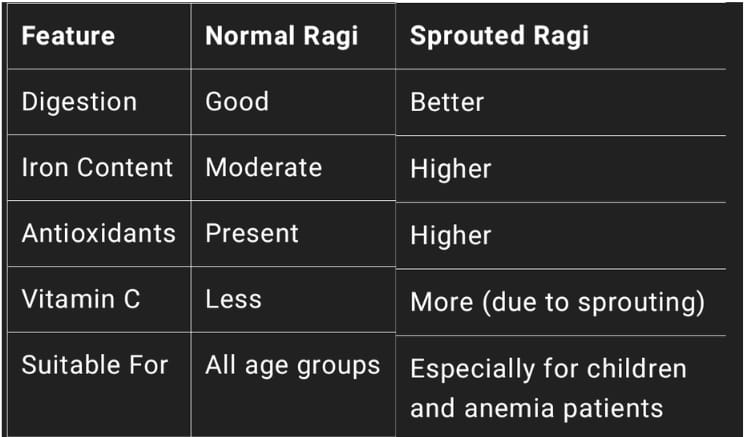Sandeep Dhand
Nutritionist And Health Educator
Introduction
Ragi, also known as finger millet, is one of the oldest and healthiest grains grown mainly in India and Africa. In India, it is commonly used in the form of Ragi flour (Ragi Atta) or Ragi seeds in various dishes. It is a gluten-free grain, rich in nutrients and easy to digest.

In recent years, Ragi has become very popular due to its high nutritional value and health benefits. It is often recommended for people of all age groups—from children to the elderly—and especially for those with lifestyle-related diseases.
What is Ragi (Finger Millet)?
Ragi is a small, reddish-brown seed that belongs to the millet family. It is a traditional crop that grows well in dry and high-temperature areas, making it perfect for Indian farming. Ragi seeds are ground into a fine powder to make Ragi Atta (flour), which is then used in cooking.


Types of Ragi Products
- Ragi Seeds – Whole seeds that can be sprouted or cooked.
- Ragi Atta (Flour) – Made by grinding dried ragi seeds. Used to make roti, porridge, dosa, etc.
- Sprouted Ragi Flour – Made by sprouting seeds before grinding. This increases nutrient availability.
- Ragi Malt or Ragi Drink – A beverage made with Ragi flour, often given to children and elderly people.
- Ragi Cookies, Ragi Pasta, and Ragi Snacks – Popular in health food stores.
Health Benefits of Ragi
- Rich in Calcium – Good for Bones
Ragi is one of the best sources of natural calcium. It helps in bone development and prevents osteoporosis. This makes it ideal for growing children and elderly people.
- Helps Control Diabetes
Ragi has a low glycemic index, which means it releases sugar slowly into the blood. This helps in managing blood sugar levels. The high fiber content also keeps you full for longer.
- Aids in Weight Loss
The high dietary fiber in Ragi reduces hunger and prevents overeating. It improves metabolism and helps in burning fat, especially when combined with a healthy diet and exercise.
- Improves Digestion
Ragi contains both soluble and insoluble fiber. It supports bowel movement and prevents constipation. It also helps in detoxifying the body.
- Supports Heart Health
Ragi is low in fat and contains good amounts of potassium and magnesium, which help in reducing blood pressure and cholesterol levels.
- Boosts Iron Levels
Ragi contains good amounts of natural iron, which helps in the production of hemoglobin. Sprouted Ragi has more iron and is useful for those suffering from anemia.
- Gluten-Free – Safe for Celiac Patients
Ragi is naturally gluten-free, which makes it a safe food for those with gluten intolerance or celiac disease.
- Good for Skin and Hair
Ragi contains natural antioxidants like methionine and amino acids that prevent skin aging and support healthy hair growth.
- Improves Brain Function
The amino acids in Ragi help in calming the body and improving sleep. It is considered a natural relaxant, which may help in anxiety and depression.
- Strengthens Immunity
With its rich mix of minerals, vitamins, and antioxidants, Ragi helps build a strong immune system.
Who Should Use Ragi Atta and Ragi Seeds?
- Children and Teenagers
Helps in bone growth and mental development.
Ragi porridge or malt is often given to babies above 6 months.
- Pregnant and Lactating Women
High calcium and iron support bone and blood health.
Increases milk production in breastfeeding mothers.
- Elderly People
Prevents osteoporosis and improves digestion.
Easy to chew and digest.
- People with Diabetes
Controls blood sugar spikes.
Better than wheat or rice in terms of glycemic index.
- People with Celiac Disease or Gluten Sensitivity
100% gluten-free.
Can be used as a substitute for wheat flour.
- People Looking to Lose Weight
Keeps the stomach full.
Reduces fat accumulation.
- Anemia Patients
Rich in natural iron.
Sprouted ragi flour helps in improving hemoglobin levels.
- Athletes and Fitness Enthusiasts
Provides energy and protein for muscle recovery.
Great as a pre- or post-workout meal.
How to Use Ragi in Daily Diet?
- Ragi Roti (Chapati)
Mix Ragi flour with warm water and a little salt.
Make dough and cook it like regular chapatis.
Eat with vegetables, dal, or curd.
- Ragi Porridge (Malt)
Mix Ragi flour with water/milk, cook for a few minutes.
Add jaggery or salt for flavor.
Great for kids and elderly people.
- Ragi Dosa or Idli
Make a batter using Ragi flour, rice flour, and curd.
Ferment overnight and cook like regular dosa/idli.
- Ragi Cookies
Made using Ragi flour, jaggery, and ghee.
A healthy snack option.
- Ragi Laddoo
Made with roasted Ragi flour, jaggery, dry fruits, and ghee.
- Ragi Upma or Ragi Balls
Savory options with vegetables and spices.


Any Side Effects of Ragi?
Ragi is generally safe for all. But excess intake may cause:
Thyroid issues in people who already have low thyroid function (due to goitrogens).
Cold or mucus problems if eaten in excess during winters without spices.
Flatulence or bloating if digestive issues exist.
How to reduce side effects:
Always cook Ragi properly.
Add warming spices like ginger, cumin, or ajwain.
Limit to 1-2 servings per day for beginners.
Best Time to Eat Ragi
Morning or Lunch Time: Best for energy and digestion.
Post-Workout: Good as a recovery meal.
Avoid eating Ragi at night in cold weather, as it may increase mucus.
How to Store Ragi Atta and Seeds?
Keep in an airtight container.
Store in a cool, dry place.
For long-term storage, keep Ragi flour in the refrigerator to prevent spoilage.
Conclusion
Ragi is truly a superfood that offers numerous health benefits. Whether you use Ragi Atta or Ragi Seeds, this millet provides essential nutrients that support your bone health, digestion, weight loss, blood sugar control, and more.
People of all age groups—from babies to the elderly—can safely consume Ragi. It’s especially beneficial for those with diabetes, anemia, gluten allergies, or those trying to lose weight.
By including Ragi in your daily diet in the form of roti, porridge, dosa, or snacks, you can lead a healthier life naturally and sustainably. If you haven’t already tried Ragi, now is the best time to start!